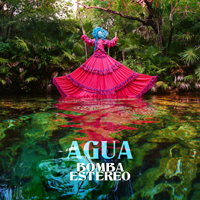
BOMBA ESTEREO
AGUA (Sony)
When Bomba Estereo sold out in 2015, that is signed to Sony and set off on a world tour to promote their latest album Amanecer, and their last hit "Soy yo," I wondered how they would ever find time, in hotels and airports in wildly different time zones, to write any good new music. They came up with Ayo in 2017, which was a rehash in every way, and instantly forgettable. What do you expect? I hear you say, It's pop music, fer pete's sake. But tracks like "Quimíca (Dance with me)," with Balkan Beat Box are bad pop music. "Money money money" is trash; other tracks, like "Internacionales" were written for those "everybody wave your hands in the air" moments in big stadiums. (Where all my Dominicana girls at?) "Flower power" is reggaeton and is followed by a rocksteady beat on "Taganga" -- cute, but all over the map, and not very engaging. Their new EP, three three-minute songs, answers that they still really have not found the time. Well, maybe they are being true to their original vision in not rushing out more crap, but there's nothing new here. If you love their early work, as I do, you will recognize familiar strains, especially in the ballad "Soledad." Despite the upbeat tempo there's a sense of loss and longing in this tune, which tugs at the heartstrings. It recalls the emotional "Algo está cambiando" from Amanecer. "Deja" addresses depression, which many people have suffered in the last year, otherwise the EP is a pleasant 11 minutes of their old (at this point) sound! Their website links to a video of "Agua" and a ton of merchandise: hoodies, hats, bathing suits and crystals!
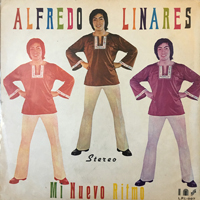
ALFREDO LINARES
MI NUEVO RITMO (Vampisoul VAMPI223 LP)
This is a 1974 LP of "salsa dura" reissued in the ongoing revival of Colombian classics from Vampisoul. This one which stands up to anything you could name from the likes of Willie Colón or Ray "Hard hands" Barretto includes four tracks recorded in Lima, Peru (Linares' hometown) as a demo, as well as in his adopted home in Colombia once he found a label. The title cut doesn't impress me as it goes from boogaloo to rock and sounds like a band desperately seeking a new idea. Their exhortation for "everybody to dance the mambo rock" is very dated, and conjurs up gogo dancers in white plastic boots doing the frug. But, having got that out of the way, they revert to type and lay down some jamming salsa while Alfredito plies the ivories. Kiko Fuentes does most of the singing. Just last year, Munster rereleased Linares' Yo que tengo album (Vampi 224), recorded in Venezuela, which set a really high bar for fiery salsa. "Amor" which ends side A is a blast but the speedy bongos do suggest the theme music for a TV cop show. Side B however is all Salsa brava con afinque as they even tell us in the first song. It does not let up and is 15 steaming minutes of hard jamming: "Ritmo caliente" goes through the roof, but they still have the energy for another smoking track "Alma y sentimiento (Soul and feeling)," which became one of their big hits. Don't miss it.

NKUMBA SYSTEM
BAILALO DURO (Prado Records)
I am fortunate in having a network of friends to keep me abreast of developments in music. Muzikifan's trusted Washington Correspondent, Ken A, hooked me up with the new Nkumba System release which I had missed. They are an Afro-Colombian rock band, which is currently one of the most engaging sounds on the planet. Colombian sound systems used to battle to get access to rare West and Central African discs which they could blast and scratch. Inevitably local bands began to cover these tunes and then after a few international music festivals when the likes of Diblo and Loketo came to play, some of these bands ended up with high-profile soukous guitarists in their ranks. Nkumba System have recruited a Cameroonian guitarist, Simba Daniel Evouza, who adds spark and fire to the entire album. The resident guitarist, Guillo Cros already had a good handle on soukous guitar and was exploring Malian guitar as well as makossa, after he met singer Mama Ohandja. From his earlier band Romperayo, Cros has brought along the rhythm section. Based in Bogota, the band recorded there and in Paris, and the album was mixed in Amsterdam. But the cosmopolitan sound bridging Central Africa and the Caribbean is as much a result of the international border-crossing in the minds of the talented members.
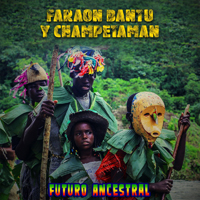
FARAON BANTU Y CHAMPETAMAN
FUTURO ANCESTRAL (Palenque Records)
Palenque Records' man behind the scenes, Lucas Silva steps out of the shadows once again to don his cape as ChampetaMan, which is the sound system manifestation of his Bogota-based label. Over the years he has built a catalogue of traditional music from the likes of Batata y su Rumba Palenquera or the hit psychedelic cumbia sounds of Abelardo Carbono, and then brought in the stellar Congolese guitars of Bopol Mansiamina and Dally Kimoko who found an eager fan base awaiting them in South America. Taking his previous hits like Colombiafrica: the Mystic Orchestra, he has created new versions, alongside DJ Rata Piano and Bleepolar. This new version of champeta they have dubbed "El Guarapo," has all the possible array of flangers, drum-machines, phone mikes, snappy loops and assorted bleeps to keep you gyrating on the dancefloor.
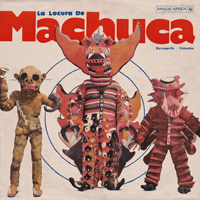
LA LOCURA DE MACHUCA (Analog Africa AA30)
After a long stay in Benin, trips to Ghana, Angola and other parts of Africa, Analog's Samy ben Redjeb has returned to Barranquilla, from whence he delivered the Aníbal Velásquez Mambo Loco, to discover the earthy funky punk sounds of Machuca. A decade ago, Samy teamed up with the renowned Colombian producer Lucas Silva for the Diablos del Ritmo compilation, and now he and Lucas have unearthed the story of an obscure record label, Machuca, and their diverse catalogue. When they succeeded with traditional cumbia, vallenato or porro songs, Machuca's owners also took a chance on more experimental bands they knew wouldn't sell as well, just for the pleasure of releasing them. So rootsy funk and psychedelic rock bands, inspired by African LPs bartered by visiting mariners, appeared on their label too. Shakara by Fela Kuti was one of the biggest underground hits in Barranquilla at the time and echoes of it are apparent in "Le Mongui" by King Somalie. The legendary Abelardo Carbonó was called on to add his psychedelic guitar while rhythm sections were beefed up by personnel from other bands. The result was that indigenous versions of African hits that were championed (and jealously guarded) by the picotero sound systems were now widely available. The sound engineer (poached from Discos Tropical) described the productions as the "B-movies of Colombian music." Though the connections are not made explicit you can tell there are African originals of some of the tracks on here: "Caracol" by Grupo Bola Roja is a remake of Miriam Makeba's "Pata Pata." The singer Amina Jiménez was renamed Mirian Makenwa for marketing purposes! I immediately spotted a mento tune "Fat Beef" by the Tellers from Jamaica, remade as "Ayu" by Rio Latino. "Juipiti," attributed to El Grupo Folclórico is no more than a riff, sustained for two and a half minutes, like one of those danceable grooves the deejays like to loop once they have a full floor. Abelardo Carbonó delivers his very catchy "A otro perro con ese hueso (a different dog for that bone)," (i.e. you can't fool me) with its guitar intro I can't quite place, maybe Led Zep? Like the Machuca label itself this compilation is diverse and quirky and delivers many aural surprises along the way.
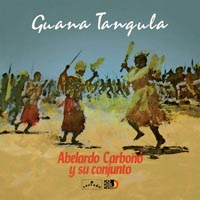
ABELARDO CARBONO Y SU CONJUNTO
GUANA TANGULA (Vampisoul VAMPI219)
Abelardo Carbonó redefined Colombian music in the 1980s. From his base in Barranquilla he applied psychedelic guitar to all the popular styles of Colombia's north coast, from Caribbean kompas to Nigerian Afrobeat. Lucas Silva says Carbonó was particularly inspired by the troubadour guitar style of Haiti. His albums were a synthesis of new sounds that led to the way to champeta and even, possibly, the Peruvian psychedelic sound from the Amazon which has been rediscovered in the last decade. Seven years ago Vampisoul put out a great compilation of his work called El Maravilloso Mundo de Abelardo Carbono. Now in their ongoing series of reissues of classics from Colombia they have brought back his debut Costeño album from 1980, with its heavy "tropical latin rock" vibe. It's not salsa nor cumbia though the shared percussion elements (such as cajón) and rhythms can be felt. It evolved from his debut album with Grupo Abharca, recorded for Machuca, and discussed below. Two of the tracks were included on the earlier compilation and there has been a sprinkling of his hits on other comps such as Soundway's Palenque Palenque. The sound is busy with Carbonó's guitar to the fore but it works well: good electric guitar over complex percussion is guaranteed to keep your toes tapping, your head bopping, your finger-percussion rapping. There's vallenato (with the caja drum) and porro underlying tracks like "La Aurora" and "Silvia Maria." The smooth sound of this early album comes from the fact that the conjunto included his two brothers who, like him, grew up listening to their dad, a famous cumbia guitarist. But the mellow social landscape changed quickly in the 80s with the rise of the drug cartels and boatloads of money going into music promotion, leaving behind Abelardo and others. So, bottom line, two of the best tracks on here, the opening cut and the title track, are already on the previous comp (and others): if you a completist or curious about the original sound that revolutionized popular music in Barranquilla 40 years ago, then don't miss this.
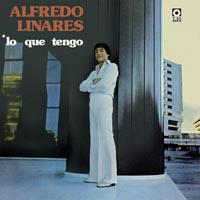
ALFREDO LINARES
LO QUE TENGO (Vampisoul VAMPI224)
Linares is from Lima, Peru, hence his no-duh nickname "el Inca." He is a salsa pianist in the Eddie Palmieri mode (percussive and grandiose and only a little bombastic); this album was recorded in Caracas, Venezuela in 1981 and falls into the lost gem category. It begs the question: is there other music of this calibre out there, that appeared on small labels and vanished? Undoubtedly yes, so we owe big thanks to Munster records for finding it and making it available again. It goes beyond salsa dura (hard salsa) to salsa brava con afinque, which means fierce and tight. They lay it down and everyone is on point: horns, congas, even the cowbellerist (cencerrocero?) -- you know what I mean. The sound is actually more Colombian (though what do I know of Venezuelan salsa?) for in the five years Linares spent in Caracas playing a regular gig at a nightclub, he became friends with Mango, a hot salsa band, and so he invited some of them into the studio for this album. The production is amped up, it sounds live, the percussionists have lots of room to stretch out with flailing timbales solos. The scene was fueled by petrodollars as opposed to the coca-dolares in Colombia and no expense was spared on getting the best line-up to back the pianist for this disc. There are a couple of slower numbers, giving us the opportunity to listen to Linares' piano pyrotechnics, but mostly it's smoking bust-a-move everybody groove party.
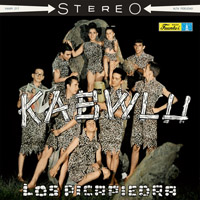
LOS PICAPIEDRA
KABWLU (Vampisoul VAMPI217)
This is a reissue of a Discos Fuentes release from 1965 which was aimed at Colombian teenagers so features a mix of rock, twist and pachanga along with cumbia and gaita. As the promo promises there are even hints of surf, doo-wop, ska and calypso. Los Picapiedra means the Flintstones and they were a studio band aimed at creating a novelty album, however their musicianship is excellent. What brought them back from extinction, apart from the catchy nonsensical caveman lyrics, was their revival by the Mexican "rebajada" movement where the sonidero sound system DJs play albums slowed down. I tried this with the opening track, "La Hossa" and it is weird but works nevertheless: I assume they are playing for an audience who are into animal tranquilizer or other nervous system depressants and the slow version captures this feeling. However at the correct speed this is a stimulating set -- though "La Hossa" at the right speed is a bit overly chirpy, as you'd expect from a kids' album. "Cumbia tropical" which is legitimately at a slower pace has wonderfully flat accordion (wait, now I am confused, did they slow this one down already?). They cover "Shame & scandal in the family" with a ska beat and a fairground organ romping along. Another cover "El bulevar de la desilusion" has a French chanteuserie vibe and while the accordion wails, the guitar picks a melody insolently and the chorus wah-wahs. I am sure they are suppressing laughter during the recording. Then it's time for the title track, pronounced Kab-oo-loo, which evokes Graciela and Machito's banter with a hint of Perez Prado. On side two "Kabwlu cavernario" is an anarchic reprise of the theme, heavy on the percussion, almost like a dub or jamming extended outtro.
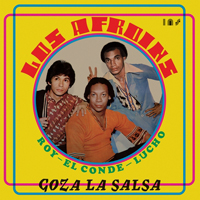
LOS AFROINS
GOZA LA SALSA (Vampisoul VAMPI 213)
Another blast of Colombian salsa dura brought to you by that relentless, long-armed crate-digger DJ Bongohead at Vampisoul. This 1975 LP came out on the obscure INS label and is packed with syncopated rhythms where amassed trumpets and trombones bounce off the timbales, congas and cymbals and the piano works out in counterpoint to the cowbell. This was the second disc from the polished outfit (the title means "Enjoy the salsa") and includes new material in a variety of styles: guaguancó, mozambique, pachanga, descarga, as well as four covers of some contemporary gems. These include Bush y sus Magníficos' 1972 "Salsa al Pindin" from Panama, and a fiery take on timbalero Orlando Marín's "Está de Bala." They drive hard into Francisco Repilado aka Compay Segundo's "Macusa," which they have renamed "Matusa," and another hard-hitting Cuban cover "La Masacre," by Joseíto Fernández which kicks off the party and is revamped as classic Colombian hard salsa. Bandleader Agustín "El Conde" Martínez sits at the keyboard; he later performed with Joe Arroyo. The two young singers Lucho and Roy would also go on to greater fame later. The rest of the band are accomplished INS house musicians. All around it is a very exciting verging on breathtaking set.
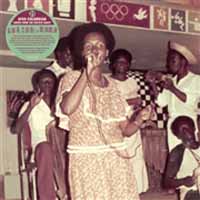
GUASA, CUNUNO Y MARIMBA (Vampisoul VAMPI199)
A double album of Afro-Colombian music from the Pacific Coast of Colombia is the latest work of Lucas Silva, taking time out from his own Palenque label to help out Vampisoul in their ongoing exploration of all aspects of Latin music. This double-LP set covers the 1970s through the end of the last century. Percussion (hand drums) is to the fore and the featured groups offer vocals and instruments as diverse as marimba and euphonium. The Pacific Coast of Colombia is a dense rain forest and was home to runaway slaves so the population remained 90% African and 10% indigenous people. While cumbia dominated the rest of the country (and was gradually infiltrated by salsa), drumming and ritual music, influenced by local shamanic traditions as much as African heritage, remained the dominant sound of the forest. Eventually military brass began to infiltrate as radio made inroads in the mid twentieth century, hence the presence of clarinet and euphonium. Peregoya & his combo Vacaná are here with the exciting "Sácale Brillo Teresa" driven by wild sax and guitar and a jamming percussion section. They are joined by less well-known acts including the singer Gertrudis Bonilla. I am particularly taken with Chencho Trompeta y los Brujos del Folklore, first for their name (there's no trumpet, but they are truly "warlocks of folklore"), then for their insistent marimba continuo. Their track "La Logia" is over 13 minutes long, whereas most of the rest are between 2 and 4 minutes. Cumbia does make an appearance with La Sonora del Pacífico, who get three cuts. La Contundencia have charmingly persistent vocals and make a couple of appearances. "Kilele" has a solid groove, again, with horn soloists. In a typical "smaller" lineup, I hear timbales, congas, guiro, bass drum, solo electric guitar and agogo, which certainly came from Africa, backing Gertrudis Bonilla. This is a varied set of great strength and diversity, well-sequenced and extremely enjoyable.
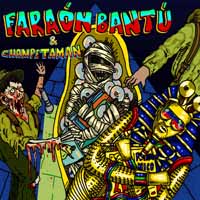
FARAON BANTU Y CHAMPETAMAN
PANTERA PICOTERA EN LA CIUDAD DE LAS PIRAMIDES (Palenque Records)
So many reissues are coming out in the back to vinyl rush that new releases are being squeezed out. This short but sweet (18 minute) blast from Colombia's distinguished Palenque Records features the label boss in his guise of Champeta Man mixing it up with some tracks issued on his label by the likes of the late great conga-player Batata. The opening cut "Macaca mata el toro (monkey kills the bull)" has a great underlying Batata groove with trombones on echo, synth, accordeon, and added percussion, then even more echo. It's a gem. The whole thing breezes by rather quickly in one long sequence, touching on cumbia and ending with a soukous jam that fades out after less than three minutes. It definitely leaves you wanting more.
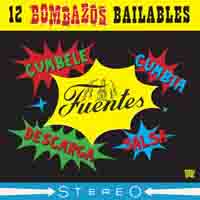
12 BOMBAZOS BAILABLES (Vampisoul VAMPI 208)
Perfect for your next party, a budget sampler from the vast Discos Fuentes catalogue of cumbia, salsa and descarga. Discos Fuentes is celebrating its 85th anniversary and has had many scorching successes, so this sampler is a great introduction to the Colombian label that is now the longest-running independent record label in the world. From boogaloo to bomba to wiry guitar and accordeon-driven cumbia, they have packed dancefloors and the reissue series by Vampisoul, focusing on the hardest to find titles, has also started to become collector's items. The set kicks off with three relatively well-known tracks: Lito Barrientos' "Cumbia en Do Menor," "Arrebata" from Lisandro Meza and the Afro-Cuban classic "Coco May May," here performed by Combo los Yogas. I say well-known because you may recall the earlier cumbia craze of the late 80s when World Circuit licensed a couple of CDs from the Fuentes catalog. But then we plunge into some steamy numbers that are just as vital but less familiar, from Peregoya, Adolfo Echeverría, Michi Sarmiento (saxophonist, who had a great disc of reissues on Soundway in 2011) and the master, Fruko (known variously as "el Barbaro," and "el Bueno"-- he is a bassist and the label's A&R man). It's non-stop action, heavily percussive and with clarinet and saxes taking the lead. It does run out of steam in the last two tracks, but it you have danced through the preceding 35 minutes it's a chance to cool down.
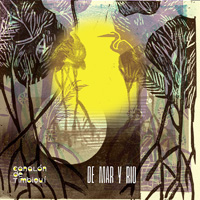
CANALON DE TIMBIQUI
DE MAR Y RIO (Llorona Records LLO 006LP)
You have to slow down for this one. It's not sleepy but there are no bells and whistles in the way of amplifiers, soaring guitars or pulsating basses. It's a folkloric album with singer and chorus, delivering lovely lyrics, five hand-slapped cununo drums, shakers (guasá), and a lively marimba. The lead singer is the highly respected and talented Nidia Góngora who reminds me a bit of the other Colombian chanteuse Toto la Momposina. From the beautiful block-printed cover to the arrangements, this is a well-thought out album. If you look at a globe you may be surprised to see Colombia has a Pacific Coast as big as its Atlantic Coast, and it's there, in those jungles that surround the Amazon, that the African heritage of the country's slaves took root and manifest in many unique musical forms and rhythms, as demonstrated by Canalón de Timbiquí. The fourth album by these former students who moved to Cali for further studies in 2002 shows a variety of traditional rhythms (& one assumes dances in performance). The songs are often religious and as students of Robert Farris Thompson know, the African slaves hid their own gods inside the pantheon of Catholic saints. They recorded this album live (in performance in the studio), in a short time and mixed it hot to give it a presence which you can feel.
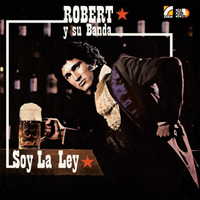
ROBERT Y SU BANDA
SOY LA LEY (Vampisoul VAMPI 190)
In the great salsa boom of the 1970s, New York had Fania Records and Colombia had Discos Fuentes. But that's not the whole story as you can imagine. And obscure as they may be, Colombia's other salsa labels such as Codiscos managed to pack the dance floors -- without Fruko as their A&R man. This disc, selected for reissue on vinyl by Vampisoul, is a fine example of salsa dura. The leader, Roberto Fonseca, was as much part of the costeño cumbia movement as he was into salsa but on this album he waxed the first recording of "Rebelión" by his childhood friend Joe Arroyo, called "El Mulato." Joe first recorded it with Fruko, but it was shelved, as Fruko thought the vocals were sub-par. After Arroyo went solo he redid it backed by La Verdad, in a new arrangement by Michi Sarmiento, and it became a global smash. Here it is a rough gem, with a cumbia feeling, especially in the bass. Joe Arroyo also wrote the title track of Roberto's album, "Soy la ley (I am the law)." The other songs are mostly covers too, of originals from Mexico, Cuba and Puerto Rico, but blend into the familiar Colombian groove, hitting on the brass with congas, timbales and cowbell. Always more cowbell! If you play this disc backwards, i.e. side two first, you get caught up in the movements of each style, and the excitement of a really hot recording session. The romping cumbia "Hijo de gitana (son of a gypsy)" reminds me of the Latin Brothers. Roberto's voice recalls Héctor Lavoie which is probably why he was so beloved by the fans in Barranquilla and Medellín.
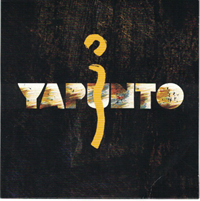
YAPUNTO! (Inouïe)
This is a fun set of traditional Colombian music, delivered with verve by a group of expatriate Colombians and locals residing in France. They got the beat! plus tight horn arrangements, probably due to the fact that they were formed around sax player Boris Pokora and trombonist Stéphane Montigny who composed most of the music. They teamed up with singer Alexandra Charry who had returned to Colombia to explore her roots and rediscover the music. The line-up features trumpet, acoustic and electric guitar, bass, congas, a percussionist who plays tambora, timbales, bombo, guiro etc, and a trap drummer. Some members met in a music conservatory in France and all have played in various groups before coming together behind this new project. To kick things off they got popular Afro-Colombian vocalist Nidia Góngora to duet on the lead-off track. Their debut is musically tight, diverse and sweet. They close with a hot merengue which has a fake ending, a real riot.
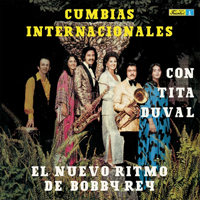
TITA DUVAL Y EL NUEVO RITMO DE BOBBY REY
CUMBIAS INTERNACIONALES (Vampisoul VAMPI 186)
For their latest reissue from the Discos Fuentes catalogue, Vampisoul turn to a novelty disc which was massively popular in its day (1974). Bobby & Tita were an Argentinian couple who moved to Medellín, Colombia in the late forties to introduce the tango but became enamored with the local cumbia. Well-known show biz personalities, they experimented with various genres and on this album fused psychedelic hippie pop with the tropical Atlantic rhythms of Colombia. The album opens with a traditional cumbia but veers into craziness with "Safari, Safari" with its English-language chorus of Manson followers (?) creepily enjoining you to come and dance while an electric sax with wah wah (the Varitone) warbles ominously over an Afro-disco beat. The cult singers continue in vague English, something about "death of de poor men" over an attempt at a Stax sound to a porro beat. The Varitone sax is back, accompanied by a Mellotron. "Zombie Rock" opens on organ, with a Santana vibe, but then the farty Varitone/Mellotron combo gasses the proceedings. Side A ends with "Noche de Cumbia"-- a tribute to Isaac Hayes' soundtrack album "Shaft" which had come out a couple of years earlier and was still massive. "Batukacuto", an Afro-funk jam with ringing cowbell kicks off side B and is the outstanding cut here. Many well-intentioned riffs are derailed by the instrumentation. "La cumbia mujer" is really too bad, but worse is in store: "My way" turns up as "A mi modo". This was a travesty even before Sid Vicious took it on. Some fine studio musicians went through hell to create this (good trap drumming and fine bass playing): it is only "good" in a perverse sense.

DIZZY MANDJEKU & ALE KUMA
DE PALENQUE A MATONGE (Zephyrus Records ZEP041)
This is a fine merging of two musical style: soukous and the Champeta Criollo sound of Colombia. A lively soprano sax animates the opening cut "Cancion de amor y muerte" and the martial drums and happy chorus set the scene for a bright solo by Dizzy on guitar. The band is the brainchild of bassist and theatrical impresario Leonardo Gómez Jattín who also wrote four of the songs. Various guest vocalists show up including Congolese Malage de Lugendo, one of the few singers to have graced both Afrisa International and TPOK Jazz, and Colombians Nidia Góngora (who appears on the Quantic albums) and Magín Díaz, legendary composer who received a Grammy (for packaging) right before he died last year. The mix of soukous guitar riffs and drumming with the melodic joys of Palenquera singing and particularly the sprightly sax (César Medina) is a winner. I gave up on soukous when the various branches of Zaiko, Choc Stars and Wenge Musica became formulaic. Dizzy started out in the 70s in a group called Kina-Rama, but by 1977 had risen to the heights of the most innovative band in Africa, Sam Mangwana's African All Stars. Through touring and exposure to music in Ivory Coast and other parts of West Africa they added an Antillean lilt (also evident in Ryco Jazz before them) and stretched out the rhythms as well as the songs creating a more relaxed format for dancers to get in the groove. Mandjeku's music has been much in demand in Colombia and like Bopol (another All Stars alumnus who was in the Colombiafrica Mystic Orchestra with Rigo Star on guitar), and other legends from that era, found an eager new audience in Cartagena. The percussion is key with congas to the fore and other shaken and rattled things, instead of drum machines, and there's nary a synth in sight. The shedding of the Paris sheen is most welcome as we return to a rootsier sound: the sax being joined by marimba. The set ends with "A pilá el arró," a folkloric number covered by Son Palenque which appeared on the AfroColombia Remix 2 album to great effect. Magín Díaz and this line-up of Dizzy with Alé Kumá did a resounding version on Díaz's album which is included here again as the closer.

MAGIN DIAZ
EL ORISHA DE LA ROSA (No Name 2017)
At the end of his long life Magín Díaz won a grammy. I am sure it was less than a thrill, since the award was for the packaging of his final CD and not the contents (for which he was also nominated). The shock may have killed him as he died, still in Las Vegas, ten days later. The grammies is a really spurious event created to celebrate the big industry honchos are their money making abilities. But we wont let that distract us from this wonderful assemblage. As an elder Díaz was able to call in some remarkable assistance on this project. The opening cut "Rosa" has both Totó la Momposina and Carlos Vives on it! This is a song he composed when he was only 13 or so, but certainly more than 80 years ago. In the interim the above-named artists and many others have covered it to the point where it is now a standard. The disc then goes to a marimba and hand-drum workout with chorus, classic traditional coastal sounds of Colombia. "Dolores tiene un piano" even has a flute on it. Díaz's mother was the biggest influence on his music, she was a bullerengue singer and would sing him to sleep nearly a century ago. He has collected the songs he wrote in his head ever since and, in his mid-90s, was given a microphone and asked to sing as many as he could recall. Sometimes he called on friends to supply the missing verses. Thus he recreated what could be the purest remaining folk music in Colombia. Then the vocals were taken to a studio to be mixed and each day different artist or bands would show up to check in on their own projects, and also perform on the songs. They were allowed to pick songs they thought they could fit in with, so artist as different as Monsieur Periné, Chango Spasiuk, Sexteto Tabalá or Mayte Montero can be heard on here. The moods also vary from Venezuelan joropo to Argentine tango (or Chamamé); even Congolese guitar legend Dizzy Madjeku chips in for the modernized Palenquero sound. The constant is Díaz's world-weary voice and his conga playing but the wide variety of other artists, from Chango Spasiuk's accordeon to the spaciness of Sytema Solar or the rapping of Li Saumet & La Yegros reframe him in a glittering kaleidoscope of sounds.
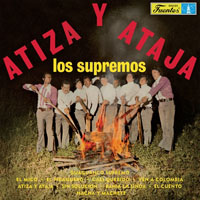
LOS SUPREMOS
ATIZA Y ATAJA (Vampisoul VAMPI1832LP)
Vampisoul continue with superb selections as they mine the vaults of Discos Fuentes for the great albums of Colombian music to reissue on vinyl. This was the only release of Los Supremos, and it is the 1971 debut recording of Edulfamid Molina Díaz, aka Piper Pimienta. I missed out on Colombian salsa the first time around. My friend DJ IJ of the infamous if not quite legendary Round World posse turned me on to the Latin Brothers. Los Supremos did take from Willie Colón and other New York-based salseros and bugalu-eros but also incorporated mellower elements of cumbia into their sound. So it's not all balls-to-the-wall or pedal-to-the-metal rave ups of the Fania All-Stars ilk, but has a swing to it, and room for nice trumpet and especially great piano parts. Another influence is the more stately guajira and son of Cuba's Sonora Matancera. The percussion is of course crisp and to the point: triangle and cowbell can even be lead instruments. Piper Díaz was a beloved singer and dancer, fronting label boss's Fruko y su Tesos and then the Latin Brothers. Sadly he was murdered in 1998. These first ten recordings with the ambitiously named El Gran Combo Los Supremos are fully fledged. The band was led by saxophonist José Duval Osorio and featured the great pianist and composer Luis Zúñiga aka "El Chiqui." The title cut, "Atiza y ataja (Push & pull)" was a dance crasher of the biggest type, a guaguancó rhythm with a descarga or improvised jam style rave up coursing through it and of course Piper Díaz's vocals coasting on top assuredly. In "Cali querido" he sings of his childhood in the barrio of Obrero. Pablo Yglesias aka DJ Bongohead described it as "the most experimental tune in the whole repertoire, mixing funky Latin soul/boogaloo with guaguancó, the whole thing punctuated with sleigh bells and a sort of garage rock Northern soul vibe that ends Atiza y ataja on an appropriately festive note."
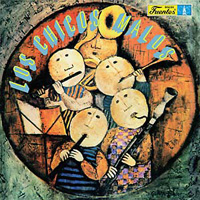
LOS CHICOS MALOS
LOS CHICOS MALOS (Vampisoul 180)
Vampisoul has unearthed an obscure 1980 gem for their latest reissue of Colombian salsa dura infused with the cumbia beat. Los Chicos Malos was a one-shot project of some of the Latin Brothers, particularly "El Nene" (Victor del Real), their pianist, composer and arranger. Inspired by Willie Colon's double-trombone attack they wanted to not only light up Cartagena but reach out to the Venezuelan market also. Some of the band were childhood friends of Joe Arroyo, and had worked with his orchestra, La Verdad; "El Nene" had written and arranged for Michi Sarmiento in the 70s and surrounded himself in the studio with fully fledged professionals. Working with Discos Fuentes, Vampisoul has remastered the album from the original tapes. If like me you dig the Latin Brothers, you will be thrilled to hear this vinyl reissue of an album that was packed full of "tropical dancefloor bangers," as DJ Bongohead calls them.
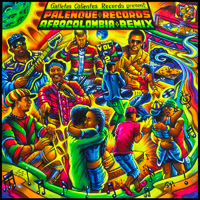
PALENQUE RECORDS AFRO-COLOMBIA REMIX VOL 2 (Galletas Calientes GCLP123)
Warning: This may destroy your subwoofer. Galletas Calientes ("Hot Biscuits" in English), a French-Colombian label, returns for another dip into the catalogue of Palenque Records to give the "global bass" scene a new shot of oomph in the phat bottom. Palenque Records has specialized in the crossover between Colombian popular music and African roots, dropping superb albums from the likes of Son Palenque, the legendary Batata y su Rumba Palenquera, and the mezmerizing Colombiafrica: The Mystic Orchestra. Along the way the Colombians have brought in luminaries of Congolese soukous guitar such as Diblo Dibala, Dally Kimoko and Bopol Mansiamina. This fusion created the sound known as Champeta Criollo and lit up the picó -- or mobile discotheque -- scene on the Caribbean coast of Colombia. The cover has been painted by an artist who decorates these picó system. The vinyl album has 7 tracks, then there are 8 more bonus tracks available as a digital download to buyers of the LP. The bonus set kicks off with a remix by Novalima of "Alioto pio" by Son Palenque. "Mama Africa," the fine track by Louis Towers & Columbiafrica, gets a total of three remixes, one being the "long guitar" version which is totally gratuitous: I guess it's for when the DJ needs to go to the bathroom. "La Negra" by Son Palenque, from their 2014 album Kamajanes is also treated to three versions: dub with melodica by Piper Street Sound Dub Redo being a standout. Be careful what you wish for: I complained that least year's Volume One compilation, which was excellent, was too short at five tracks. This one, at 15, is too long. The last few tracks, inevitably, get stuck in the groove, seemingly not fully evolved as ideas, but there's plenty to get your teeth into, or to continue the phat bottom analogy, to get your paws around.
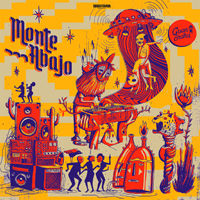
GUANCHAKA
MONTE ABAJO (Wakan Tanka)
Bomba Estereo have a new album out, but since they signed to Japanese mega-capitalists Sony two albums ago, they have started replicating themselves without much conviction, as if someone said, OK, that's good just do more of that. The songs, the chord progressions, the effects are all too familiar. I have been looking for this summer's breakout hit and it's getting kinda late in the season, but I played the lead track, "Cumbia mañanera," from Guanchaka on my podcast a while ago because I thought it had potential. It's catchy, in that robotic techno-cumbia way, but then it all becomes a bit too samey: more of the stoned carnival fairground organ against a loping backbeat as awkward giant figures on stilts sway uncertainly and dark clouds gather behind the big top. Actually my images are a bit off: the cover shows a guy embracing a limp sex doll in the beam from a flying saucer rising from a deejay deck, with voodoo dolls and hi-fi equipment in the desert. Shades of Burning Man who put the sand in the sandwiches. So it's even more menacing than it appears at first. You can stream/hear the whole thing on bandcamp (linked above) and decide. Giving music away free is great, but then it cheapens it to the point where you may think it is really not worth much anyway.
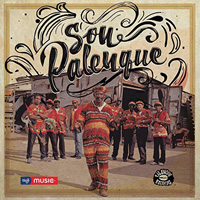
SON PALENQUE
KUTU PRIETA PA SARAGUIA (Tico Music/Palenque Records)
Some time in the not-too-distant past soukous guitar merged with the native cumbia rhythms of Colombia and found a natural home in the champeta music of Son Palenque. Since 1998 DJ Lucas Silva has been producing high quality CDs of this exciting blend of African and traditional Colombian music, from the fine Champeta Criolla compilations to four albums by this outfit known as Son Palenque. They have also recorded for Munster Records. They grew up separately in the timeless traditions of rural villages but found each other when they moved to the city. Their latest offering is an exciting mix, with vocals (sung and declaimed) and saxophone augmenting the speedy guitar and the writhing coils of percussion on the first four tracks. After that, they mostly get rootsy and show they can generate as much excitement with drums and shakers behind the vocals while the guitarist is off at the bar. The bassist steps up on track 6, "Jo no puedo más (I can't go on)."
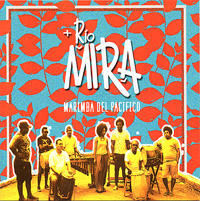
RIO MIRA
MARIMBA DEL PACIFICO (AYA Records AYA 005 CD)
I put on this offering from the Colombia/Ecuadorian group and immediately thought I was listening to an unplugged version of Sidestepper's "Deja." The first cut "Adios Morena" shares the basic melody of Sidestepper's remix, but it's probably a universal Colombian folk tune. The Mira river flows between Colombia and Ecuador but people on both banks have a shared heritage, eat the same food, speak the same language and have much in common, including this lilting marimba music, that is so ingrained in the region that it has been protected since 2015 by UNESCO on their list of the Intangible Cultural Heritage of Humanity. The group are eight youngsters who have taken up the instruments, along with the bombo, a bass drum, the cununo, a hand drum, and the guasa, a cylindrical shaker. They sing to patron saints and for mourning ceremonies. As we know the palenques of these coastal people were established by runaway African slaves who kept their own cultural traditions alive: they didn't respect national boundaries and had as little to do with the Spanish colonial authorities as possible. The wooden xylophones are of course indigenous to the Bantu peoples of West Africa and cyclical rhythms as well as call and response vocals can be heard in both West African and Pacific coastal music from Colombia down to Ecuador. The marimbas are made of wood in both diatonic and pentatonic scales, the hanging resonators are cane and the mallets are made from rubber, each component contributing to the unique qualities found in this music. It is a well-paced and beautifully realized album.
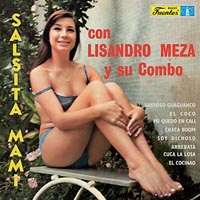
LISANDRO MEZA
SALSITA MAMI (Vampisoul VAMPI 177LP)
Another classic album from Discos Fuentes, reproduced in facsimile. Including the obligatory cover "bathing beauty" from the time when such girls were quite demure. Already a versatile bandleader at 21, multi-instrumentalist Lisandro Meza joined Los Corraleros de Majagual and, with an eye on Beny Moré's outfit, renamed them as his "Combo Gigante." They took up the boogaloo sound then prevalent in New York's salsa scene with raw sound and a party ambience in the studio. For their first album, issued in 1970, they performed eight covers, with cowbell & additionally a tambourine up front adding a weird loping cumbia beat to the rickety piano montuno. Timbales and brass also stride forth on a variety of tunes originally waxed by Benny Moré with Perez Prado, Celia Cruz with la Sonora Matancera, Willie Rosario and others. Short, sweet and very much to the point.
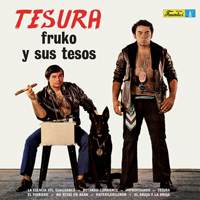
FRUKO
TESURA (Vampisoul VAMP173)
Vampisoul are making good on their promise to deliver the works of Fruko to us in their original form. Fruko (Julio Estrada Rincón) was the bass-player and leader of his own group who eventually became the biggest act on Discos Fuentes, the label that brought cumbia, merengue and porro to Colombian fans from 1934 on, and salsa, in its local form, when it peaked in the 60s and 70s. He discovered Joe Arroyo and Piper Pimienta Diaz. As a youngster he was tapped to play in Lisandro Meza's group and their tour to New York gave him exposure to the hot salsa scene there in 1968. Two years later he formed his own group and this incendiary album is their debut. I don't know if it was intended for dancing, but I sure couldn't keep up -- Fruko works out on his bass, with congas and timbales, piano and horns all feeding the fire. It's hard to believe it's their debut album, it is so assured in its delivery. The consensus is that the inherent swagger was copped from Willie Colón's posturing as a bad-ass in New York's salsa scene. In addition, the intense rhythms which drive the whole thing could be from the hard hands of maestro Ray Barretto. I am partial to Colombian salsa, mainly because of the Fruko and Latin Brothers albums I have heard, and since this is new to me it's a real treat.
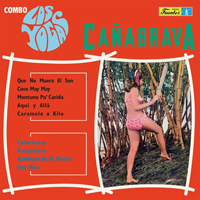
COMBO LOS YOGAS
CANABRAVA (Vampisoul VAMPI 175)
After a blast of high fructose Fruko I was ready for more of the same and was not disappointed by this second reissue from Vampisoul. It's a 1968 set of descarga, where you throw it all down, with some guaguancó, charanga and even son to stir up the salsa sauce. There's prominent bass and keyboards with again, Discos Fuentes' passion for cowbell, congas and timbales high in the mix. The keyboard player, Aníbal Angel, was leader of this short-lived group from Medellín. This is another great find and the good news is Vampisoul is planning a whole series of reissues of crucial LPs from Discos Fuentes (the major, if not only, Colombian label) in replica covers on 180g vinyl. Look for Lisandro Meza, Peregoyo and others in the near future. The singer is the Barranquilla native Johnny Moré (who claimed relation to Beny) who makes himself audible over the four-to-the-floor combo. Aníbal, or "Anan," had studied in Manhattan and started a band called Los Teen-Agers before turning his focus to salsa of the New York Latin variety. They cover Larry Harlow's hit "Coco May May" (itself copped from an older Cuban number), as well as Orquesta Harlow's "Bajándote," on which they get loose, and show what a great performing act they must have been. In fact the whole album is comprised of well-chosen covers which create a kaleidoscopic image of the types of Latin music which originally influenced Johnny Pacheco, the founder of New York's Fania label. This is the fount of the sound that would take root in Colombia in the following decades and create a new branch of Latin groove: salsa Colombiana.
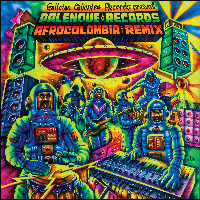
PALENQUE RECORDS AFROCOLOMBIA REMIX (Galletas Calientes Records GC010)
Perfect to get your juices flowing for your cardio workout; in fact you'd be hard pressed to listen to this sitting down. The Colombians have long cherished African music and it has become a mainstay of their sound systems, or picós. Like their Jamaican counterparts they are keen to get the rarest sides (blacking out the labels so rivals cannot find out what they have) and sample and loop and repeat the seben, stretching out the groove, overlaying it with drum patterns or other riffs for maximum dance floor impact. Much as I love my LPs I have moved into the CD then digital worlds, reluctantly. One bonus of the CD is the hour length so you are not constantly jumping up to turn over the album. This is only half an hour long, as it's an LP, which left me wanting more. Palenque has been a prime mover of the AfroColombia scene since the mid-1990s, having brought us Batata, Luis Towers, Mystic Orchestra and a bunch of other great stuff. Their motto is "We are the Real Motherfuckers of AfroColombian Music!" Champeta music grew out of the hybrid of African music with Colombian instruments such as marimba, and legendary Congolese musicians Diblo Dibala and Bopol Mansiamania have had residencies in Cartagena to add their licks to the tracks. To celebrate twenty years, Palenque invited "global bass" DJs from Europe and the Americas to remix tracks. It's very varied but also engaging. Soukous fans will love the lead-off track "Kumina" with Bopol and Son Palenque, remixed by the Dutchman Solo Moderna, with a lovely sax part. Son Palenque also provide the stunning "A Pila el Arroz" in the Ghetto Kumbé Afro Rework by a Colombian DJ. "Mini Kusuto" by Viviano Torres is the most trancelike track with echoey jungle sounds and even marimbas sounding spacey. There's a woman's voice whispering something that sounds to me like "Itsy bitsy spider" but I know that can't be right. A revelation I had listening to this is that there is a connection between pygmy flutes and Andean pan pipes, once the pan pipes looped on reverb come in, you hear that pygmy polyphony that is so mesmerizing. As Heraclitus said, "The hidden harmony is better than the obvious one."
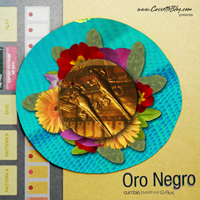
ORO NEGRO
CUMBIA CURADO POR G-FLUX (cassette blog)
This is a growing trend, away from physical CDs to downloads, and now to free product. The question is, who has time to keep track of it all? because it's one thing to follow endless links to blogs with links to downloads and another to actually listen in real time to all the music that throws up. Electro cumbia has been a growing movement all century (with roots in the psychedelia of the late 1960s and the disco of the 70s) and we have seen bands from Colombia, Peru, Mexico, even the USA embracing the sound and creating a fascinating mix of accordion, pulsing bass and rackety guiro, with sonic collage from radio and overdubs from synthesizer, electronic drums and electric guitar. This is the 6th anniversary post of cassette blog, made by Gustavo Naranjo who wanted to find out where the music was headed in 2017. There's a lot to take in in these 17 tracks; previously I had only heard of one of these acts, El Hijo de La Cumbia, but all the bands on here are worth checking out. Akun Maia kicks it off with a blistering surf chicha with landing spaceships and radio voice on tannoy to give you the full cumbia-on-acid effect right at the outset. Mooglisound provide a run-down of smooth but primitive synthesizer settings: showroom dummies in ruffled shirts. The opposite effect, distorted and crude with shaky vocals permeates the next track "Lucero Espiritual" by the anonymously named El Conjunto. Gustavo calls the singing "phantasmal but sweet." I had not thought of the Kraftwerk connection before but I sense it again in the die-cut cardboard perfection of "I believe in cumbia" delivered by the pride of Tepoztlan, Asagi Seundo. It's not all great but the loping beat makes it at least consistent so there's a familiar lilt to the whole thing. "Cumbia satanica" by El Malo is one standout for me, and Hector Guerra's "Libre de Apegos (Free of addictions)" which has a reggaeton beat, another. It goes out with a "rich and cheesy" sound, according to the compiler, but overall it's good value for (0) money.
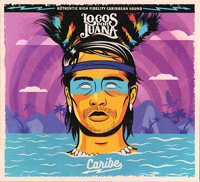
LOCOS POR JUANA
CARIBE (Rock Moon)
Locos por Juana are a Miami-based band of Colombian extraction. They feature a power trio with trombone at the heart of the group, but on stage and in the studio they recruit half a dozen guests for each track. The result is a tour de force, more exhausting than a tour de france, of Caribbean sounds in a mad mash-up. There's champeta, cumbia and hip hop from Colombia as well as a heavy dose of reggae, raggamuffin and dub from JahJahLand, plus the funk and rock quotient from the urban scene in Miami, or as I like to call it Miasmi. It's a bit too much to take at one sitting. The musicianship is top notch, and they excel at reggae, cumbia and champeta, but there are ten, count 'em, uh, twelve guest singers or toasters on 15 tracks, and it gets wearing. Individually there are some brilliant cuts (e.g. the title track) on here (as well as slackness like "Dance with me"), manageable in small doses. If you assume it's a radio show rather than a one-act concert you can probably handle the abrupt shifts from reggae to champeta ("Se te kite to") to Afrobeat ("La Policía," complete with a Fela chorus) and back to champeta ("Una foto"), thence to hippy hoppy stuff. The vibe is pure dance, so if you can ignore Collie Buddz reciting "yes we find a cure for the world tonight" or ChocquiBtown's similar exhortation, you will get on fine. As the man said, "Wave your hands in the air like you just don't care."
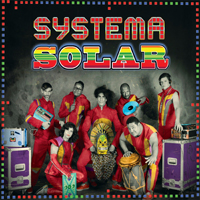
SYSTEMA SOLAR
(Nacional Records)
Systema Solar are one of the great electronic party bands from Colombia, sadly their new album is merely an abridged repackaging of their first two albums. They couldn't even come up with a title for it. It is good to be reminded of their hit, "Ya Veras," and their dubby ambient techno beat, equal parts house and cumbia, in trancy tracks like "Oyé," or tradi-modern ones like "Fayuguaya,"but it's definitely time for some new material from them. The new disc ends with one new track "Tumbalamurallas," but that's no reason to put your fist through a wall or drop 89 cents on amazon. If you don't have their discos, they have a great summery feel, with odd moments of darkness & gloom (like Bay Area summers in fact).
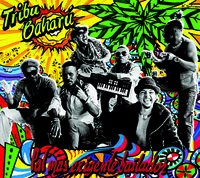
TRIBU BAHARU
PA'L MAS EXIGENTE BAILADOR (Tambora Records)
One of the greatest musical survivals or reinventions of recent decades is soukous which was the popular dance craze from the Congo in the late Mobutu era. It never died out but evolved through the passion of deejays in Colombia, and this latest album from Bogota-based Tribu Baharú features the loud and lively champeta sound with added attraction Diblo Dibala on lead guitar. He is only on one track, "Amor Champetetuo," but the spirit of soukous guitar permeates the whole thing: it's an invitation to dance from the get go. Baharú's own guitarist is Boricua, he has mastered the licks of the speedy soukous masters; as part of the update there are some deejay scratches and samples -- their MC is called Shaka, and he brings Raggamuffin style, not to mention 20 years of the "Boom Bam Alliance" to the sound. There's also the switch from French and Lingala to Spanish, with the odd shout-out in English, "Peace and Love to everyone! Right?" In the spirit of inclusiveness there's a one-drop reggae track also, "Nora." The title means something like "For the most urgent dancing," so hop to it.

SIDESTEPPER
SUPERNATURAL LOVE (RealWorld)
I was excited about this new Sidestepper album, but since it arrived I can hardly bring myself to play it. In some ways you want groups to evolve: sure they must sound like themselves, and they start off in a familiar vein, but the new direction Sidestepper has taken is away from their techno-cumbia sound and towards light bright pop which turns its back on their Afro-Colombian roots. They may find a different audience with this set, which is fluffy and has flutes where there used to be a relentless bottom-heavy beat, but it's not what I expected. In fact the PR for the disc sums it up as "Sparkling with Anglo-soul melodies and imbued with a childlike innocence." There are still good studio touches with delay effects and some layering, but the vocals are, to put it politely, wimpy and the backing is more "Kumbaya" than Cumbia. Richard Blair, the producer who has worked with Toto la Momposina, and now even sings on this album, wanted to use more hand percussion and rely less on studio effects. But, listening to it, I am seeking out the familiar synth-bass grooves while trying to screen out his lyrics which recall English folk groups of the 70s. "La Flor y la voz" is the stand-out for me, because it most sounds like the Sidestepper I know and love, with Erika Muñoz singing, chorus, hand percussion, bass synth and even a part two in dub. But then comes "Hear the rain come," and the closer "Celestial" which Blair sings lead on and I have to turn it off. So, to me, this is a half listenable and half unlistenable album. You may get better results, or just wait for the next one and see if they get their groove back.